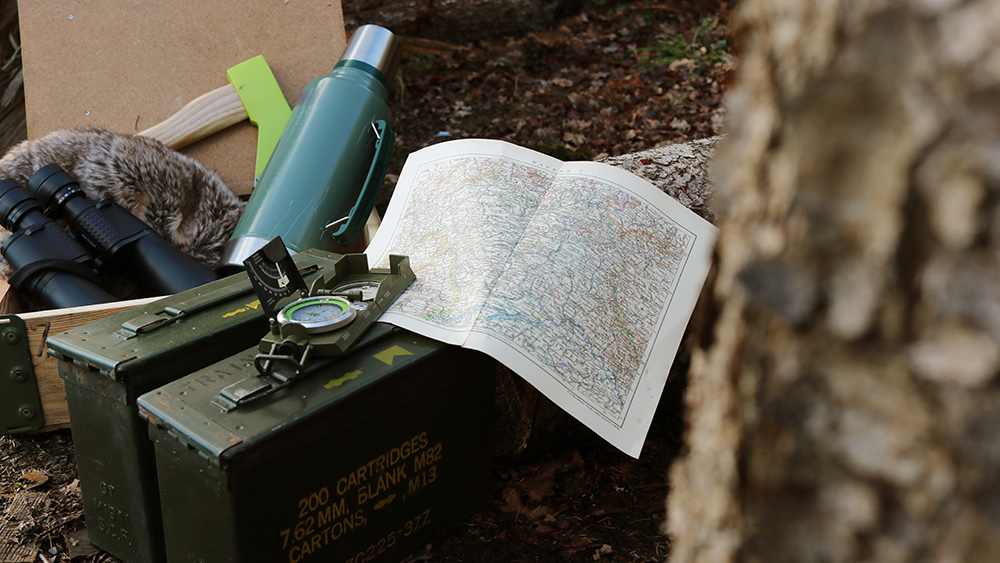Survival skills: Jug line fishing for beginners
By zoeysky // 2021-08-27
Tweet
Share
Copy

In an SHTF situation, knowing how to find food is key to your survival. And even outside of survival situations, skills like fishing ensure that you can find food for your family if you're near a body of water.
If you don't know how to use traditional fishing methods, learn about jug fishing to catch fish with simple and inexpensive tools. (h/t to AskAPrepper.com)
Can you really catch fish with a jug?
Jug line fishing is an unusual but effective method for catching fish. You should try it if you want to fish but don't want to invest in expensive fishing gear. This method is affordable but consistent and effective. If you're in a location with a decent amount of fish, use the jug line method to get food for yourself and your survival group when SHTF. Jug fishing is often called "jugging" because the method uses jugs that float in the water to catch fish. The bait is then suspended beneath each jug. (Related: Advanced prepper tips to take your prepping to the next level.) This unique setup lets you cover a large area of the water without having to focus all your attention on a line and rod.Jug fishing supplies
First, collect some jugs. It's best to use plastic jugs because they work well and they are durable, light and cheap. You can use bleach bottles, two-liter soda bottles, or milk jugs (quart or gallon) for jugging. As long as your container is made of plastic, sturdy and has a strong seal, it should work. Next, you will need fishing line and bait. Use a 50- or 65-lb. test braid or Dacron fishing line. For bait, you can use whatever you normally use for the specific fish you want to catch. Below are some suggestions for bait that you can use to catch specific kinds of fish:- Use stinky, cut baits to attract catfish such as bluegill, drum, perch, shad, and skipjack herring. Alternatively, you can use insect baits like crickets, grasshoppers and nightcrawlers.
- Another option is grocery store baits like chicken or turkey livers, frozen shrimp, bacon slices, or hot dogs.
- You can also use prepared stinkbaits like dip and punch baits.
Jug fishing guide for beginners
Follow the steps below if you're a newbie to jug line fishing:- Choose the length of your line. If you're fishing somewhere you know the water’s depth, that will help determine the line length you need so the bait suspends near the water’s floor.
- Fasten the line to a plastic jug.
- Attach a weight towards the end of the line. Use something that weighs at least two pounds or more if you want the jugs to be steady, like a brick. If you want free-floating jugs, use a weight that's less than one pound. But if conditions are windy, use something heavier.
- Attach a hook to the end of your line. The hook size will depend on the fish you want to catch. Try attaching two hooks: One above the weight, and the second at the end of the line. This allows the jug to float into shallow water and still catch fish.
- Attach the other end of the line around the jug’s "neck."
Jug line fishing techniques
Here are some useful tips for jugging beginners:- Brightly colored jugs are easier to see on the surface. This can help you spot them once they drift away.
- Set up several jugs with varying line lengths so you can fish with the jugs throughout different water depths.
- Use more than one kind of bait to lure different types of fish.
- Let the jugs work and adjust the jugs that are sitting idle for too long.
- The jugs will start to bob just like a bobber once a fish has taken the bait. The minute you see this, get to the jug and pull in the fish on the line.
- If there is too much movement in the water, your jugs and lines may get entangled in floating debris. The jugs may also be difficult to maneuver or you might lose them in the water.
- Note that jug fishing is most effective in waters with mild to no current and decent weather conditions.
- Pay attention to water temperatures. If it’s mid-summer in a hot climate with warmer water temps, the fish might die quickly. Check on your jugs every hour or when fishing in hot weather.
Jug line fishing regulations
Note that jug line fishing isn’t allowed in all jurisdictions so check what your local regulations are before you start. If jug fishing is allowed in your area, you may need to label each jug with your name, address and fishing permit number. In some areas, you are required to be present at all times. Each state and area has its own set of regulations that govern things such as:- The number of jugs allowed to be in use at one time.
- The number of hooks required or allowed per jug.
- The size of the fish caught.
- The number of fish caught.
Tweet
Share
Copy
Tagged Under:
preparedness prepping food supply how to survival bug out survivalist fishing survival skills wilderness survival survival fishing prepping skills jugging jug line fishing jug fishing
You Might Also Like
The Health Ranger talks with Brad Harris about budget-friendly prepping – Brighteon.TV
By Ramon Tomey // Share
Home cleaning hacks: Non-toxic DIY carpet cleaner recipe
By Zoey Sky // Share
Prepper must-haves: 8 Kinds of gloves you need on your homestead
By Divina Ramirez // Share
10 Essential outdoor skills that will help you survive when SHTF
By Zoey Sky // Share
Survival supplies: How long does bottled water last?
By Mary Villareal // Share
Survival medicine: Are you familiar with the medicinal uses of pomegranates?
By Divina Ramirez // Share
Recent News
Hollywood embraces AI: Disney bets $1 billion on OpenAI
By kevinhughes // Share
Netflix children's programming heavily saturated with LGBT themes, report finds
By bellecarter // Share











